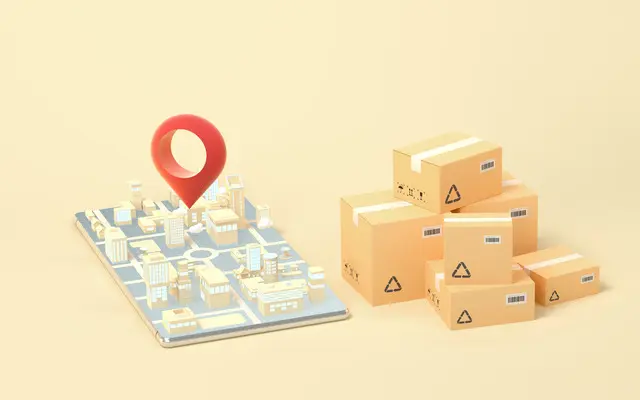Overcoming the Challenges of Shipping and Delivery Automation in the Supply Chain
The shipping and delivery process is a critical component of the supply chain, but it can also be one of the most challenging to manage. Manual processes, such as generating shipping labels, arranging transportation, and tracking shipments, can be time-consuming and error-prone. This can lead to delays, lost shipments, and unhappy customers.
Shipping and Delivery Automation is the key to overcoming these challenges. By automating these processes, businesses can improve efficiency, accuracy, and customer satisfaction.
Python, AI, and cloud-based solutions can be used to automate a variety of shipping and delivery tasks, including:
- Generating shipping labels and documentation
- Arranging transportation or courier services
- Tracking shipment status and providing real-time updates to customers
- Updating order records with shipping information and tracking numbers
By automating these tasks, businesses can free up their employees to focus on other value-added activities. This can lead to increased productivity and profitability.

The Role of Python, AI, and the Cloud in Shipping and Delivery Automation
Python, AI, and the cloud play a vital role in shipping and delivery automation.
Python
Python is a versatile programming language that is well-suited for developing unattended bots. These bots can be used to automate a variety of tasks, such as:
- Generating shipping labels and documentation
- Arranging transportation or courier services
- Tracking shipment status and providing real-time updates to customers
- Updating order records with shipping information and tracking numbers
Python bots can be deployed on-premises or in the cloud. They can be scheduled to run on a regular basis or triggered by specific events.
Attended Bots
Attended bots are another type of bot that can be used to automate shipping and delivery tasks. Attended bots require human interaction to complete tasks. This makes them ideal for tasks that require judgment or decision-making.
For example, an attended bot could be used to:
- Review and approve shipping orders
- Handle customer inquiries about shipments
- Resolve shipping issues
Attended bots can be customized to meet the specific needs of a business. They can be integrated with a variety of software applications, including ERP systems, CRM systems, and shipping carriers.
Cloud Platforms
Cloud platforms provide a scalable and cost-effective way to deploy and manage shipping and delivery automation solutions. Cloud platforms offer a variety of features and services that can help businesses to:
- Develop and deploy bots
- Integrate bots with other software applications
- Monitor and manage bots
- Scale bots to meet changing demand
Cloud platforms also provide access to AI services that can be used to improve the accuracy and efficiency of shipping and delivery automation solutions.
AI
AI can be used to improve the accuracy and handle edge-cases for shipping and delivery automation. For example, AI can be used to:
- Identify and correct errors in shipping addresses
- Predict shipping delays
- Optimize shipping routes
- Provide real-time customer support
AI techniques such as image recognition, natural language processing (NLP), and generative AI can make these automations more powerful. For example, image recognition can be used to identify damaged goods, and NLP can be used to understand customer inquiries.
By using Python, AI, and the cloud, businesses can automate their shipping and delivery processes and improve efficiency, accuracy, and customer satisfaction.

Building Shipping and Delivery Automation with Python and the Cloud
To automate the shipping and delivery process, you need to first analyze the subprocesses involved. These subprocesses include:
- Generating shipping labels and documentation
- Arranging transportation or courier services
- Tracking shipment status and providing real-time updates to customers
- Updating order records with shipping information and tracking numbers
Once you have analyzed the subprocesses, you can start to develop your automation solution.
Using Python and the Cloud
Python is a versatile programming language that is well-suited for developing shipping and delivery automation solutions. Python is easy to learn and use, and it has a large community of developers who can provide support.
The cloud provides a scalable and cost-effective way to deploy and manage your automation solution. Cloud platforms offer a variety of features and services that can help you to:
- Develop and deploy bots
- Integrate bots with other software applications
- Monitor and manage bots
- Scale bots to meet changing demand
Steps for Automating Shipping and Delivery
The following steps will help you to automate your shipping and delivery process:
- Identify the subprocesses that you want to automate.
- Develop a Python script for each subprocess.
- Deploy your Python scripts to the cloud.
- Monitor and manage your automation solution.
Data Security and Compliance
Data security and compliance are important considerations for any shipping and delivery automation solution. You need to make sure that your solution protects customer data and complies with all applicable laws and regulations.
Advantages of Python over No-Code RPA/Workflow Tools
Python offers a number of advantages over no-code RPA/workflow tools for shipping and delivery automation. These advantages include:
- Flexibility: Python is a more flexible language than no-code RPA/workflow tools. This means that you can use Python to develop more complex and customized automation solutions.
- Scalability: Python is a more scalable language than no-code RPA/workflow tools. This means that you can use Python to develop automation solutions that can handle large volumes of data.
- Cost: Python is a more cost-effective language than no-code RPA/workflow tools. This is because Python is open source and there are no licensing fees.
Algorythum’s Approach
Algorythum takes a different approach to shipping and delivery automation than most BPA companies. We believe that off-the-shelf automation platforms are not always the best solution for our clients. We take a custom approach to automation, using Python and the cloud to develop solutions that are tailored to the specific needs of our clients.
Our approach has a number of advantages, including:
- Flexibility: We can develop automation solutions that are tailored to the specific needs of our clients.
- Scalability: We can develop automation solutions that can handle large volumes of data.
- Cost: We can develop automation solutions that are cost-effective.
If you are looking for a shipping and delivery automation solution that is flexible, scalable, and cost-effective, then Algorythum is the right choice for you.

The Future of Shipping and Delivery Automation
The future of shipping and delivery automation is bright. As technology continues to develop, we can expect to see even more innovative and efficient automation solutions.
Some of the potential possibilities for extending the implementation of shipping and delivery automation include:
- Using AI to improve decision-making. AI can be used to identify and correct errors in shipping addresses, predict shipping delays, optimize shipping routes, and provide real-time customer support.
- Using blockchain to improve security and transparency. Blockchain can be used to create a secure and transparent record of shipping transactions. This can help to reduce fraud and improve trust between shippers and carriers.
- Using drones to deliver packages. Drones can be used to deliver packages to remote or difficult-to-reach areas. This can help to reduce shipping costs and improve delivery times.
To stay up-to-date on the latest developments in shipping and delivery automation, subscribe to our blog. You can also contact our team to get a free feasibility and cost-estimate for your custom requirements.
We believe that shipping and delivery automation has the potential to revolutionize the supply chain industry. By using Python, AI, and the cloud, businesses can automate their shipping and delivery processes and improve efficiency, accuracy, and customer satisfaction.
Contact us today to learn more about how we can help you automate your shipping and delivery processes.

Algorythum – Your Partner in Automations and Beyond
At Algorythum, we specialize in crafting custom RPA solutions with Python, specifically tailored to your industry. We break free from the limitations of off-the-shelf tools, offering:
- A team of Automation & DevSecOps Experts: Deeply experienced in building scalable and efficient automation solutions for various businesses in all industries.
- Reduced Automation Maintenance Costs: Our code is clear, maintainable, and minimizes future upkeep expenses (up to 90% reduction compared to platforms).
- Future-Proof Solutions: You own the code, ensuring flexibility and adaptability as your processes and regulations evolve.









